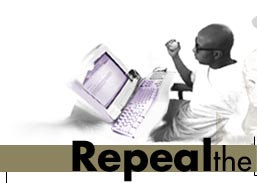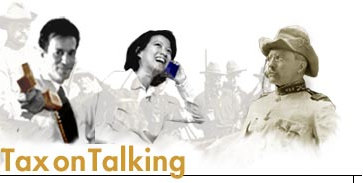FET Fundamentals
The FET was first introduced as a "temporary" luxury tax in 1898 to
fund the Spanish American War. The FET remains in effect today, over 100
years later.
The FET is imposed on communications services at a rate of 3 percent
(this rate was made permanent in 1990). Unlike other excise taxes which
arguably serve some good by decreasing the consumption of the taxed
product (i.e., alcoholic beverages and tobacco), there is no such
benefit from the FET on telephone service. Additionally, unlike other
excise tax revenues, the FET revenues are not "earmarked" for a specific
purpose -- they flow directly into the general revenue.
Taxable Services:
- Local Telephone Service
- Subscriber Line Charges
- Add-on features, such as Call Waiting and Caller ID
- Local Area Message Charges
- Toll Telephone Service
- Toll Message Charges
- WATS
- Centrex
- Directory Assistance
- Long Distance Telephone Service
- Wireless Telephone Service
Non-Taxable Services:
- Private Communication Service
- Installation
- Centrex
- Intercommunication portion
- Repair and Maintenance of customer owned equipment
FET Exemptions:
- Certain governmental customers
- American Red Cross
- Non-profit Educational Organizations
- Non-profit Hospitals
- Toll Telephone service for common carriers, radio and television
broadcasting stations and networks
- Services, other than local, used exclusively in collection of news
for the public press, radio or television broadcasting or collection
or dissemination of news.
- Sales for resale (i.e., Carrier Access)
What is the FET? | Why the FET Must Go | What Do You Pay? | Take Action |
Coalition Members |
Legislative
Update | Media
Center | Contact
Us | Privacy
| Home





